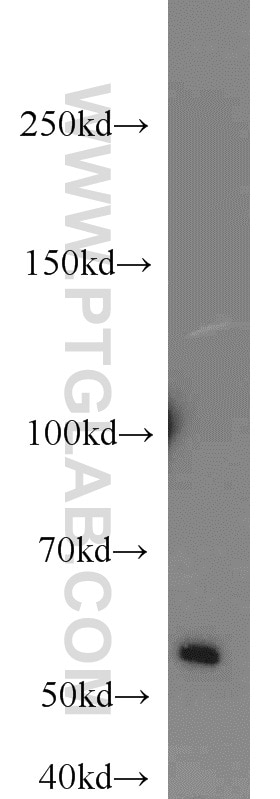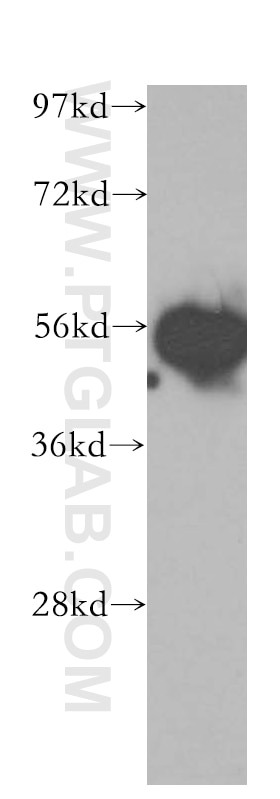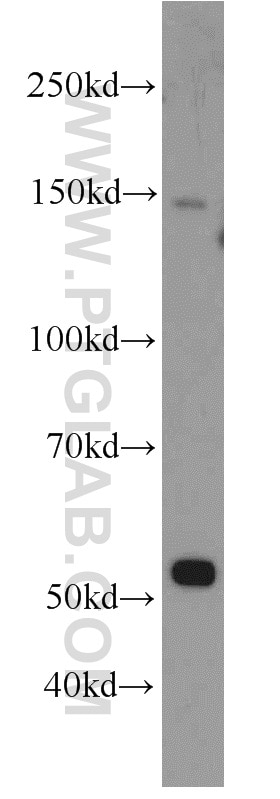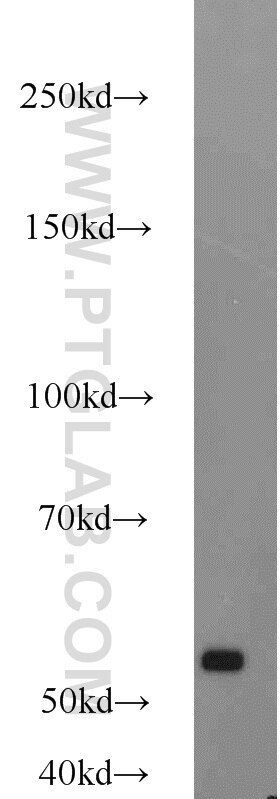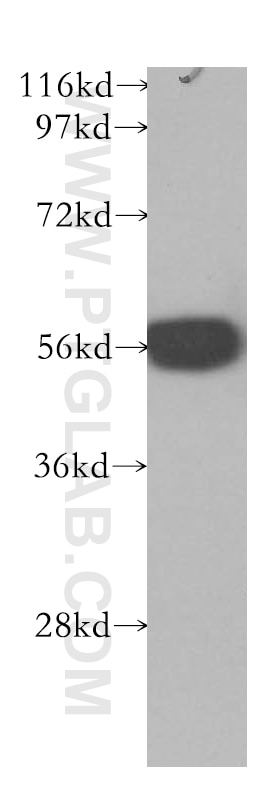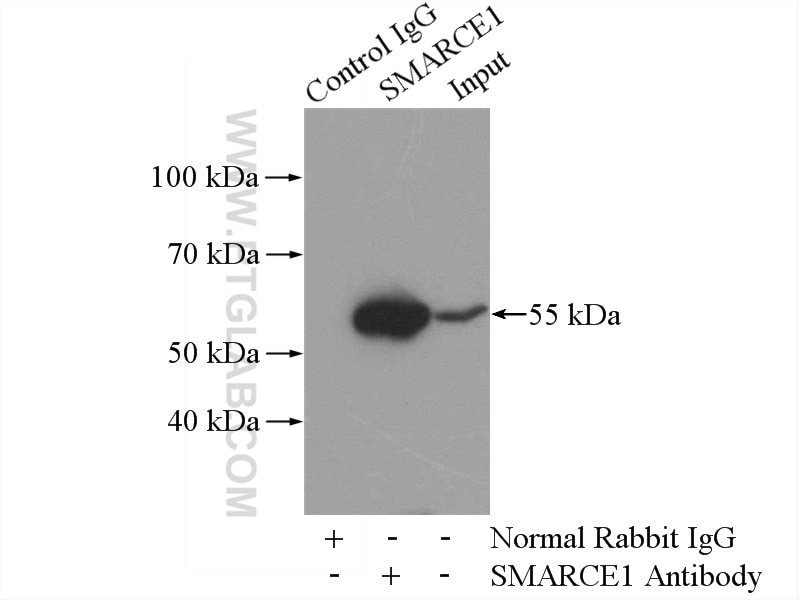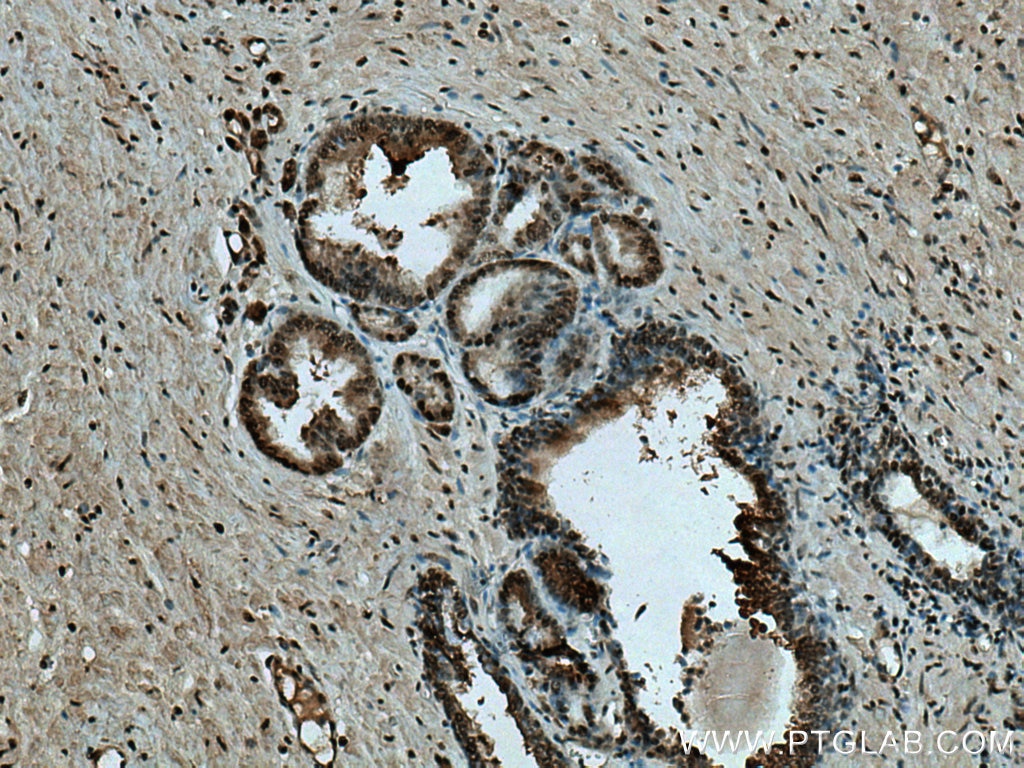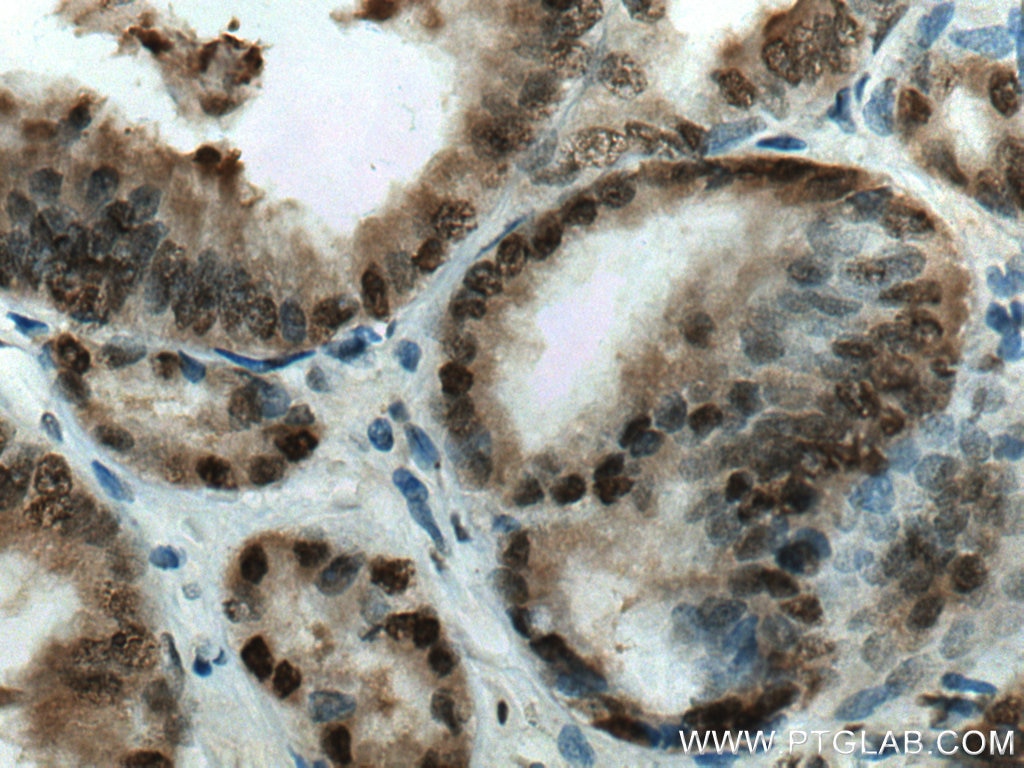Anticorps Polyclonal de lapin anti-SMARCE1
SMARCE1 Polyclonal Antibody for WB, IP, IHC, ELISA
Hôte / Isotype
Lapin / IgG
Réactivité testée
Humain et plus (1)
Applications
WB, IP, IHC, ELISA
Conjugaison
Non conjugué
N° de cat : 10814-1-AP
Synonymes
Galerie de données de validation
Applications testées
| Résultats positifs en WB | cellules Jurkat, cellules HEK-293, cellules HeLa, cellules MCF-7 |
| Résultats positifs en IP | cellules HEK-293 |
| Résultats positifs en IHC | tissu de cancer de la prostate humain, il est suggéré de démasquer l'antigène avec un tampon de TE buffer pH 9.0; (*) À défaut, 'le démasquage de l'antigène peut être 'effectué avec un tampon citrate pH 6,0. |
Dilution recommandée
| Application | Dilution |
|---|---|
| Western Blot (WB) | WB : 1:500-1:2000 |
| Immunoprécipitation (IP) | IP : 0.5-4.0 ug for 1.0-3.0 mg of total protein lysate |
| Immunohistochimie (IHC) | IHC : 1:50-1:500 |
| It is recommended that this reagent should be titrated in each testing system to obtain optimal results. | |
| Sample-dependent, check data in validation data gallery | |
Applications publiées
| WB | See 1 publications below |
Informations sur le produit
10814-1-AP cible SMARCE1 dans les applications de WB, IP, IHC, ELISA et montre une réactivité avec des échantillons Humain
| Réactivité | Humain |
| Réactivité citée | souris |
| Hôte / Isotype | Lapin / IgG |
| Clonalité | Polyclonal |
| Type | Anticorps |
| Immunogène | SMARCE1 Protéine recombinante Ag1161 |
| Nom complet | SWI/SNF related, matrix associated, actin dependent regulator of chromatin, subfamily e, member 1 |
| Masse moléculaire calculée | 47 kDa |
| Poids moléculaire observé | 50-55 kDa |
| Numéro d’acquisition GenBank | BC007082 |
| Symbole du gène | SMARCE1 |
| Identification du gène (NCBI) | 6605 |
| Conjugaison | Non conjugué |
| Forme | Liquide |
| Méthode de purification | Purification par affinité contre l'antigène |
| Tampon de stockage | PBS with 0.02% sodium azide and 50% glycerol |
| Conditions de stockage | Stocker à -20°C. Stable pendant un an après l'expédition. L'aliquotage n'est pas nécessaire pour le stockage à -20oC Les 20ul contiennent 0,1% de BSA. |
Informations générales
Via antagonizing chromatin-mediated transcriptional repression, the SWI/SNF complex in S. cerevisiae and Drosophila is thought to facilitate transcriptional activation of specific genes. The BRG1/brm-associated factors, or SMARCE1, complex in mammals is functionally related to SWI/SNF and consists of 9 to 12 subunits, some of which are homologous to SWI/SNF subunits. It contains a DNA-binding HMG domain and performs multiple biological functions, including DNA-, protein- and chromatin-binding, transcription coactivating activity, chromatin modification, DNA-dependent negative regulation of transcription, regulation of transcription of the RNA polymerase II promoter. In addition, SMARCE1, as an ER (estrogen receptor) subtype-selective modulator, regulates ER mediated transcription in a ligand-dependent manner and also directly binds to AR (androgen receptor) to alter its activity. The calculated molecular weight of SMARCE1 is 47 kDa, but modified SMARCE1 is about 55 kDa.
Protocole
| Product Specific Protocols | |
|---|---|
| WB protocol for SMARCE1 antibody 10814-1-AP | Download protocol |
| IHC protocol for SMARCE1 antibody 10814-1-AP | Download protocol |
| IP protocol for SMARCE1 antibody 10814-1-AP | Download protocol |
| Standard Protocols | |
|---|---|
| Click here to view our Standard Protocols |
